Abstract
Urease activity of tobacco XD cells (1U cells) had undergone a 4-fold increase (4U cells) during a year of growth on urea (Skokut and Filner 1980 Plant Phvsiol 65: 995-1003). A clone of 4U cells gave rise to 12U cells during another year of growth on urea. The doubling time of 12U cells on urea is 2.2 days, compared to about 4 days for 1U cells, while 1U and 12U cells double in 2 days on nitrate. Acetohydroxamic acid (AHA), a specific inhibitor/reversible inactivator of jack bean urease, affects tobacco cell urease similarly. Fifty per cent inhibition of growth by AHA occurred at 20 micromolar in 1U cells growing on urea and at 165 micromolar in 12U cells growing on urea, but at 600 micromolar for either 1U or 12U cells growing on nitrate. When 12U cells were grown on urea with 100 micromolar AHA, extractable urease activity decreased 80% within 2.5 hours and remained at this level for 2 weeks; the doubling time increased to 3.7 days, and intracellular urea rose 2-fold, compared to 12U cells grown on urea without AHA. Urease of 12U cells inactivated by AHA in vivo could be reactivated to its pre-AHA level by incubation at 30 C after extraction and separation from free AHA. AHA inhibited incorporation of 15N from [15N]urea into Kjeldahl nitrogen in the cells, in spite of the increased intracellular urea. These results indicate that AHA acts primarily by inhibiting urease action, rather than by inhibition of formation of urease protein or of uptake of urea. Because 12U cells are 8 times more tolerant of AHA than 1U cells, it is likely that growth on urea in the presence of AHA should select strongly for cells with high urease.
Full text
PDF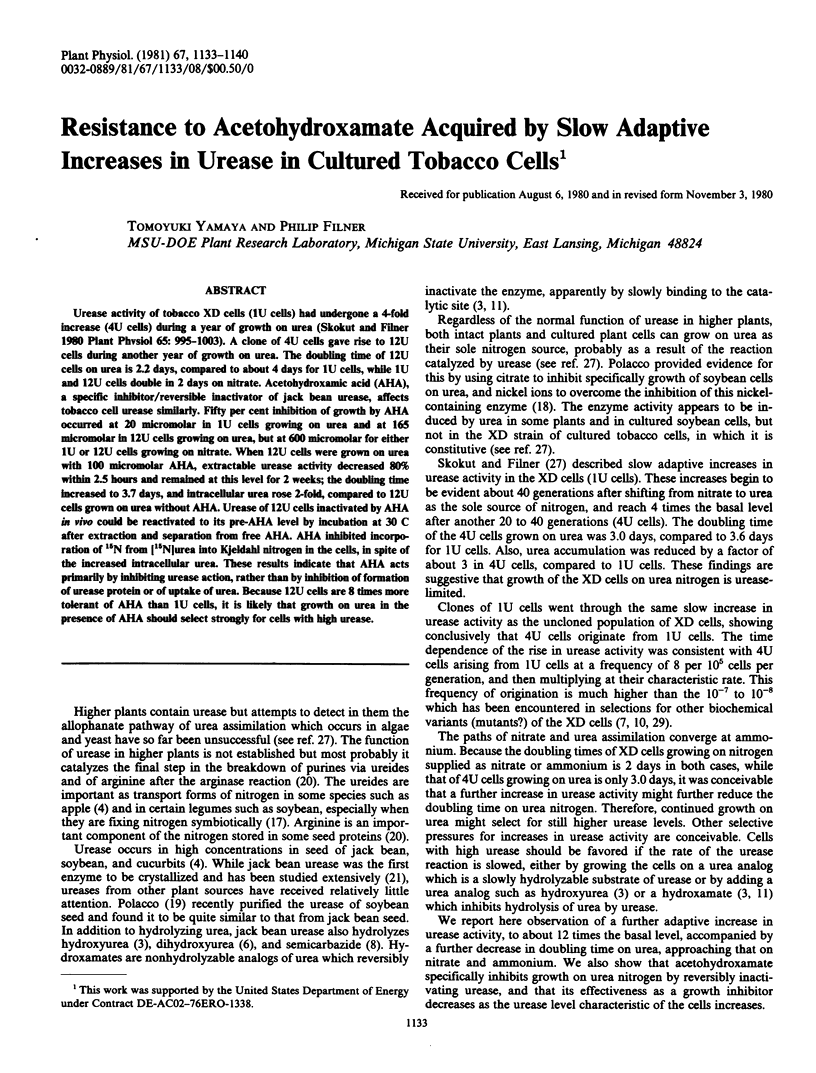
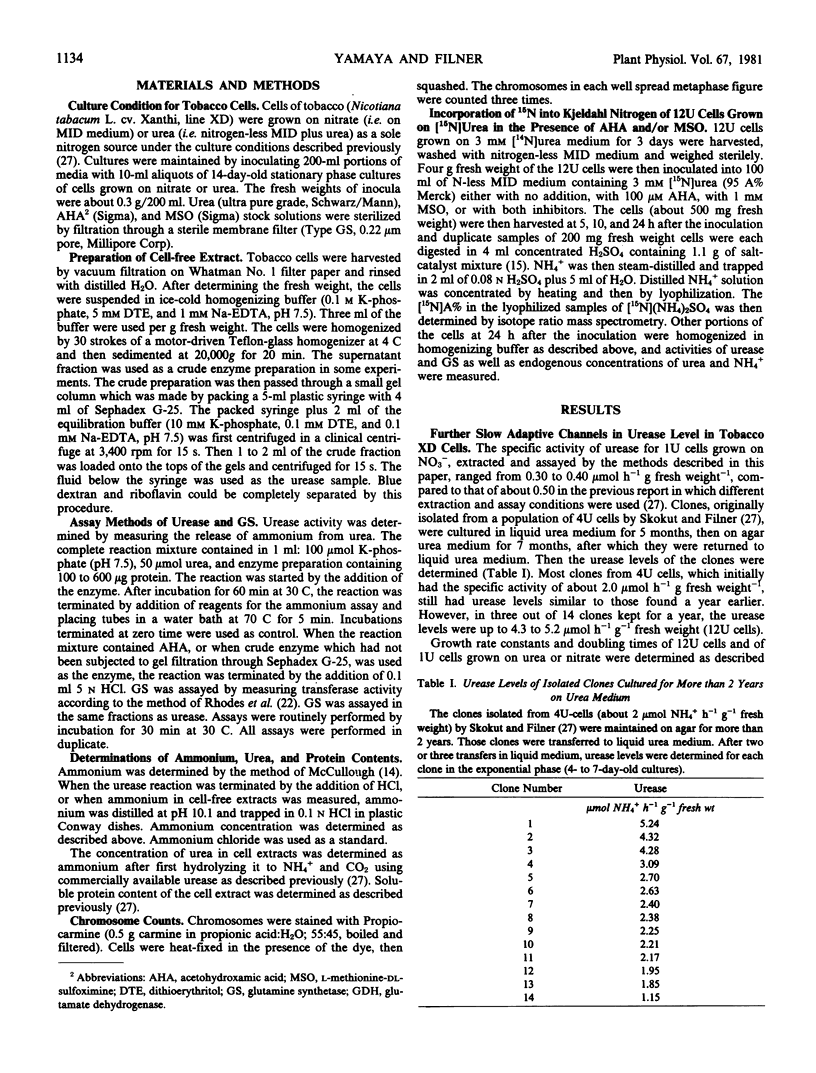
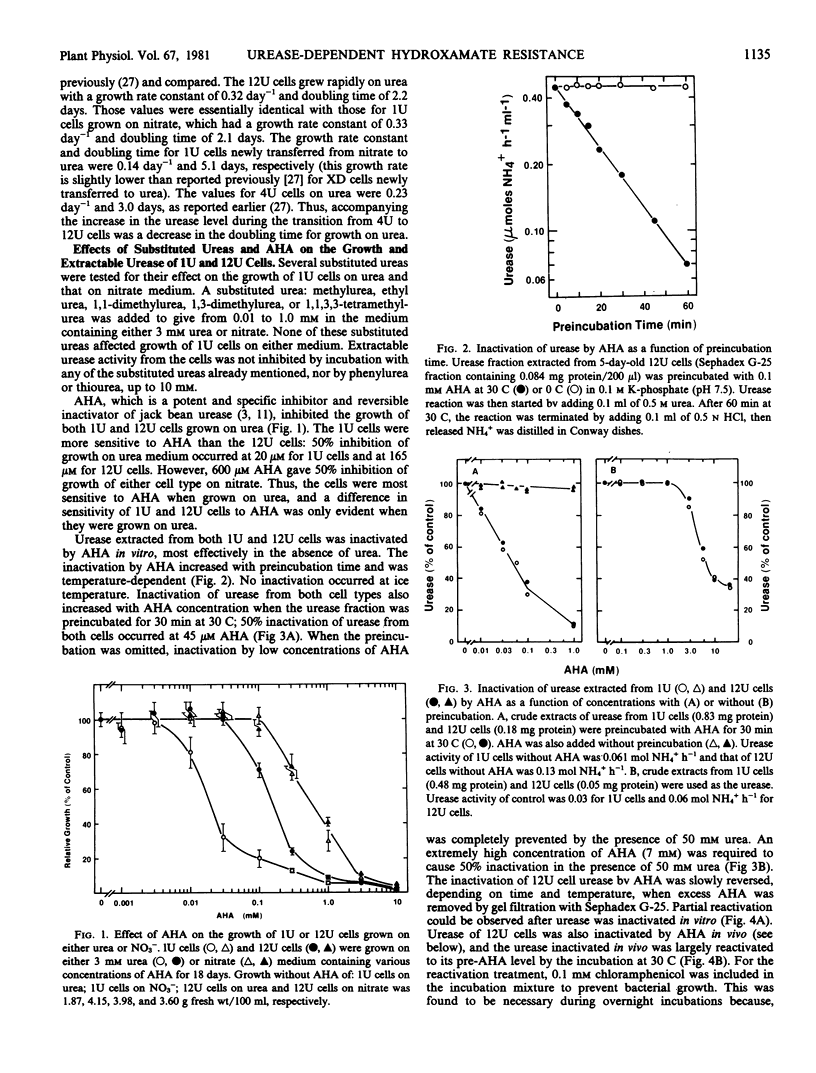
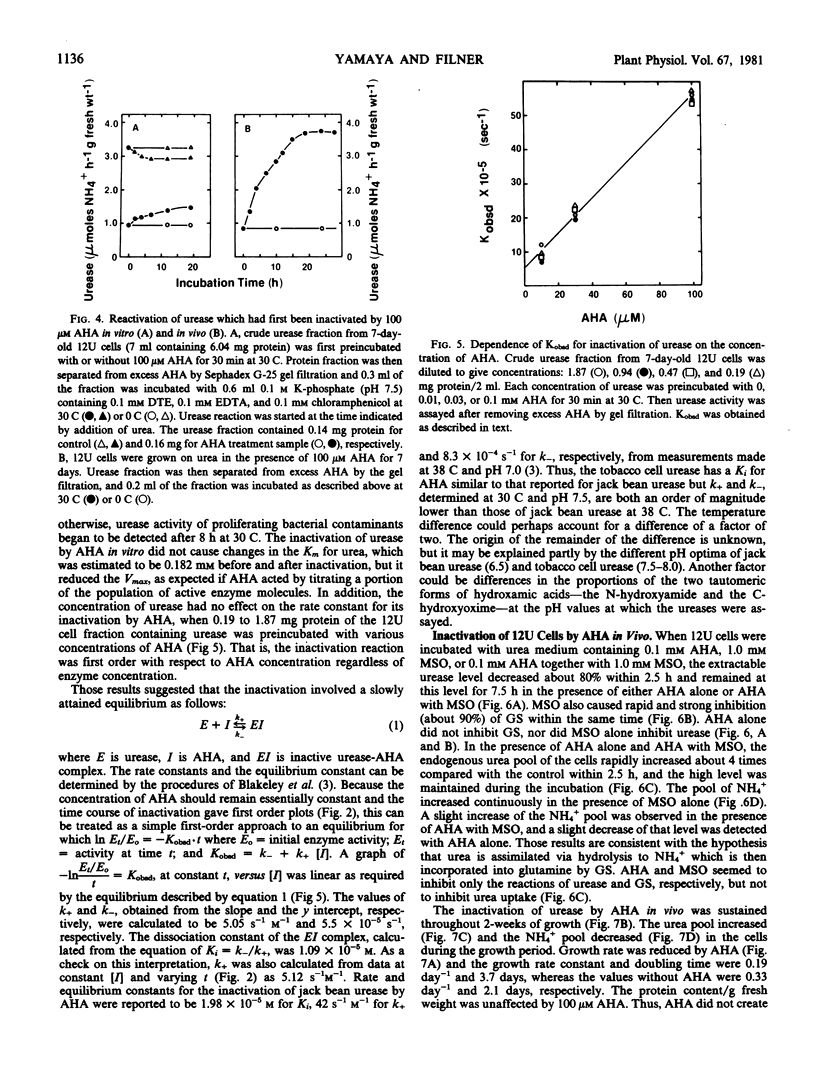
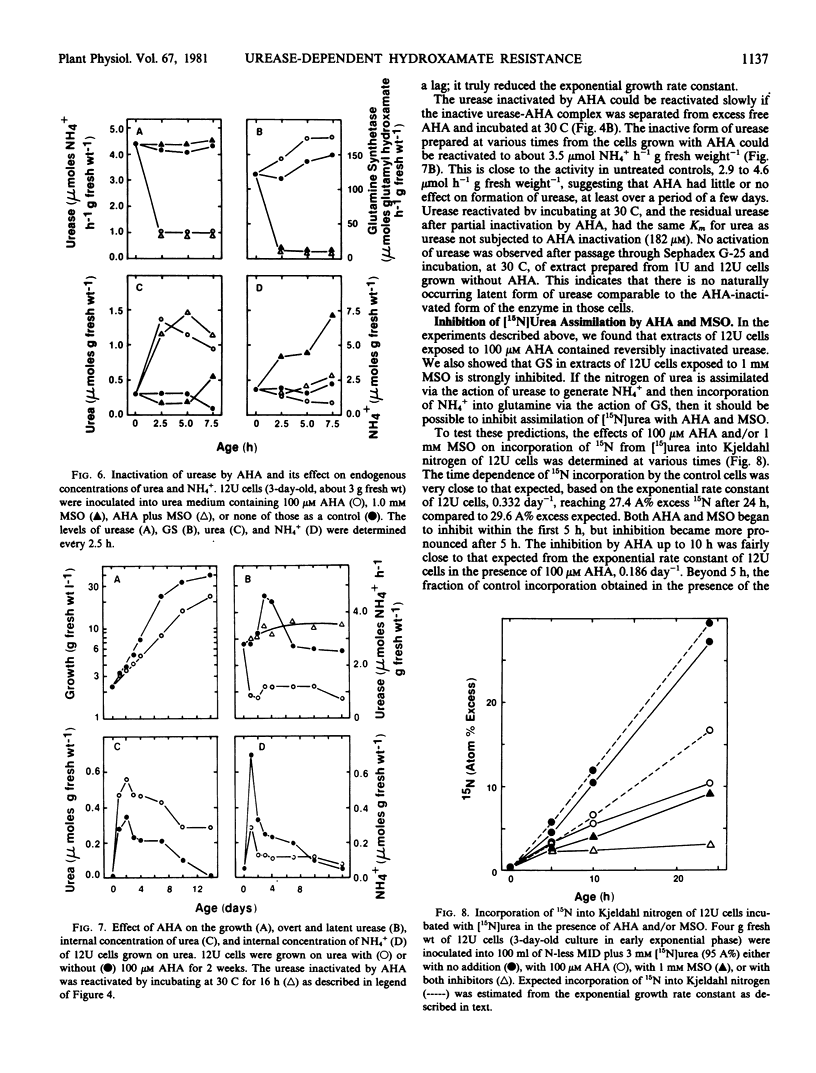
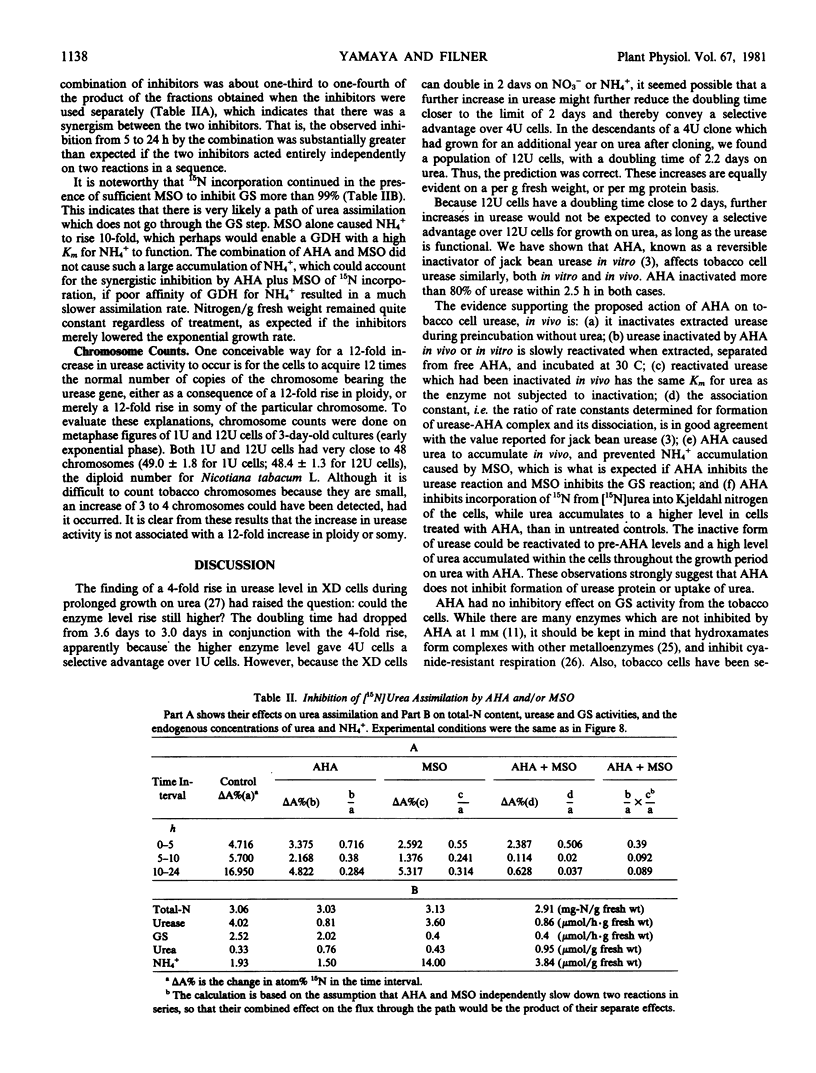
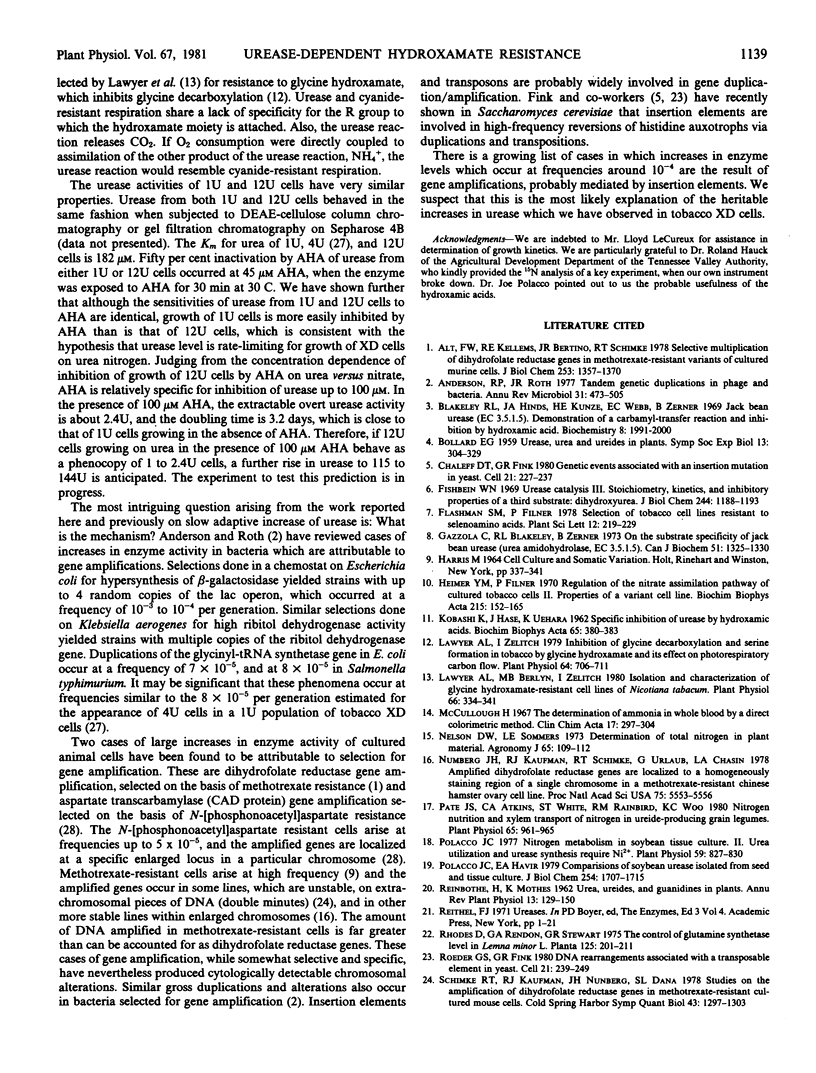
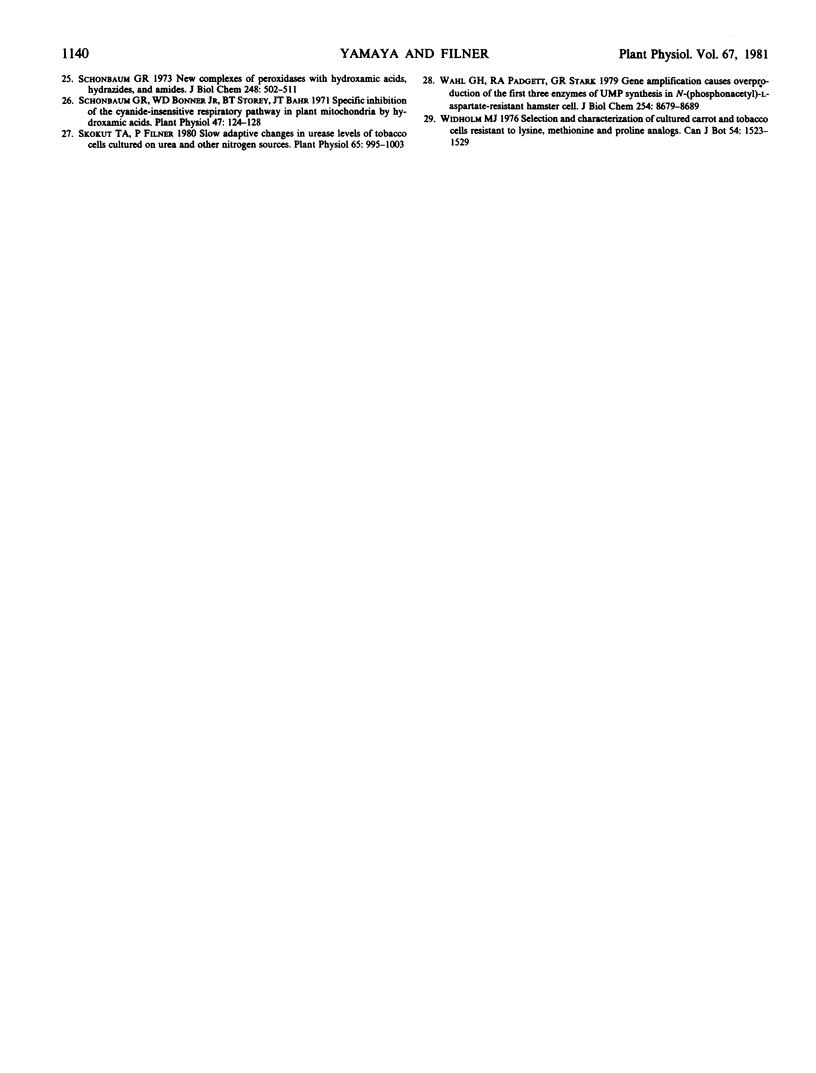
Selected References
These references are in PubMed. This may not be the complete list of references from this article.
- Alt F. W., Kellems R. E., Bertino J. R., Schimke R. T. Selective multiplication of dihydrofolate reductase genes in methotrexate-resistant variants of cultured murine cells. J Biol Chem. 1978 Mar 10;253(5):1357–1370. [PubMed] [Google Scholar]
- Anderson R. P., Roth J. R. Tandem genetic duplications in phage and bacteria. Annu Rev Microbiol. 1977;31:473–505. doi: 10.1146/annurev.mi.31.100177.002353. [DOI] [PubMed] [Google Scholar]
- Blakeley R. L., Hinds J. A., Kunze H. E., Webb E. C., Zerner B. Jack bean urease (EC 3.5.1.5). Demonstration of a carbamoyl-transfer reaction and inhibition by hydroxamic acids. Biochemistry. 1969 May;8(5):1991–2000. doi: 10.1021/bi00833a032. [DOI] [PubMed] [Google Scholar]
- Chaleff D. T., Fink G. R. Genetic events associated with an insertion mutation in yeast. Cell. 1980 Aug;21(1):227–237. doi: 10.1016/0092-8674(80)90130-0. [DOI] [PubMed] [Google Scholar]
- Fishbein W. N. Urease catalysis. 3. Stoichiometry, kinetics, and inhibitory properties of a third substrate: dihydroxyurea. J Biol Chem. 1969 Mar 10;244(5):1188–1193. [PubMed] [Google Scholar]
- Gazzola C., Blakeley R. L., Zerner B. On the substrate specificity of jack bean urease (urea amidohydrolase, EC 3.5.1.5). Can J Biochem. 1973 Sep;51(9):1325–1330. doi: 10.1139/o73-174. [DOI] [PubMed] [Google Scholar]
- Heimer Y. M., Filner P. Regulation of the nitrate assimilation pathway of cultured tobacco cells. II. Properties of a variant cell line. Biochim Biophys Acta. 1970 Jul 21;215(1):152–165. doi: 10.1016/0304-4165(70)90398-3. [DOI] [PubMed] [Google Scholar]
- KOBASHI K., HASE J., UEHARA K. Specific inhibition of urease by hydroxamic acids. Biochim Biophys Acta. 1962 Dec 4;65:380–383. doi: 10.1016/0006-3002(62)91067-3. [DOI] [PubMed] [Google Scholar]
- Lawyer A. L., Berlyn M. B., Zelitch I. Isolation and Characterization of Glycine Hydroxamate-resistant Cell Lines of Nicotiana tabacum. Plant Physiol. 1980 Aug;66(2):334–341. doi: 10.1104/pp.66.2.334. [DOI] [PMC free article] [PubMed] [Google Scholar]
- Lawyer A. L., Zelitch I. Inhibition of glycine decarboxylation and serine formation in tobacco by glycine hydroxamate and its effect on photorespiratory carbon flow. Plant Physiol. 1979 Nov;64(5):706–711. doi: 10.1104/pp.64.5.706. [DOI] [PMC free article] [PubMed] [Google Scholar]
- McCullough H. The determination of ammonia in whole blood by a direct colorimetric method. Clin Chim Acta. 1967 Aug;17(2):297–304. doi: 10.1016/0009-8981(67)90133-7. [DOI] [PubMed] [Google Scholar]
- Nunberg J. H., Kaufman R. J., Schimke R. T., Urlaub G., Chasin L. A. Amplified dihydrofolate reductase genes are localized to a homogeneously staining region of a single chromosome in a methotrexate-resistant Chinese hamster ovary cell line. Proc Natl Acad Sci U S A. 1978 Nov;75(11):5553–5556. doi: 10.1073/pnas.75.11.5553. [DOI] [PMC free article] [PubMed] [Google Scholar]
- Pate J. S., Atkins C. A., White S. T., Rainbird R. M., Woo K. C. Nitrogen Nutrition and Xylem Transport of Nitrogen in Ureide-producing Grain Legumes. Plant Physiol. 1980 May;65(5):961–965. doi: 10.1104/pp.65.5.961. [DOI] [PMC free article] [PubMed] [Google Scholar]
- Polacco J. C., Havir E. A. Comparisons of soybean urease isolated from seed and tissue culture. J Biol Chem. 1979 Mar 10;254(5):1707–1715. [PubMed] [Google Scholar]
- Polacco J. C. Nitrogen Metabolism in Soybean Tissue Culture: II. Urea Utilization and Urease Synthesis Require Ni. Plant Physiol. 1977 May;59(5):827–830. doi: 10.1104/pp.59.5.827. [DOI] [PMC free article] [PubMed] [Google Scholar]
- Roeder G. S., Fink G. R. DNA rearrangements associated with a transposable element in yeast. Cell. 1980 Aug;21(1):239–249. doi: 10.1016/0092-8674(80)90131-2. [DOI] [PubMed] [Google Scholar]
- Schimke R. T., Kaufman R. J., Nunberg J. H., Dana S. L. Studies on the amplification of dihydrofolate reductase genes in methotrexate-resistant cultured mouse cells. Cold Spring Harb Symp Quant Biol. 1979;43(Pt 2):1297–1303. doi: 10.1101/sqb.1979.043.01.148. [DOI] [PubMed] [Google Scholar]
- Schonbaum G. R., Bonner W. D., Jr, Storey B. T., Bahr J. T. Specific inhibition of the cyanide-insensitive respiratory pathway in plant mitochondria by hydroxamic acids. Plant Physiol. 1971 Jan;47(1):124–128. doi: 10.1104/pp.47.1.124. [DOI] [PMC free article] [PubMed] [Google Scholar]
- Schonbaum G. R. New complexes of peroxidases with hydroxamic acids, hydrazides, and amides. J Biol Chem. 1973 Jan 25;248(2):502–511. [PubMed] [Google Scholar]
- Skokut T. A., Filner P. Slow adaptive changes in urease levels of tobacco cells cultured on urea and other nitrogen sources. Plant Physiol. 1980 May;65(5):995–1003. doi: 10.1104/pp.65.5.995. [DOI] [PMC free article] [PubMed] [Google Scholar]
- Wahl G. M., Padgett R. A., Stark G. R. Gene amplification causes overproduction of the first three enzymes of UMP synthesis in N-(phosphonacetyl)-L-aspartate-resistant hamster cells. J Biol Chem. 1979 Sep 10;254(17):8679–8689. [PubMed] [Google Scholar]


